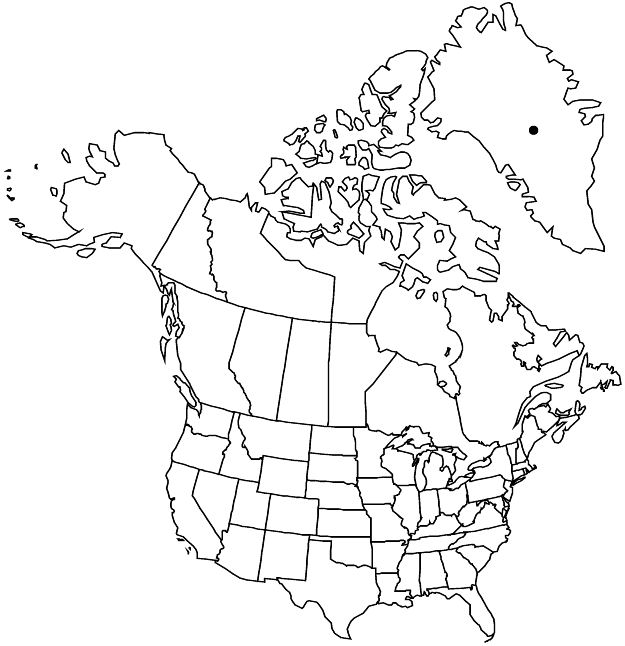Dryas octopetala
Sp. Pl. 1: 501. 1753.
Plants 2.5–12 cm. Leaf-blades oblong or ovate to elliptic, 3–16 × 0.5–6.5 mm, base usually truncate or cordate, sometimes cuneate, margins flat, coarsely dentate to serrate, sinuses 5–50 (–65) % to midvein, apex acute to rounded, surfaces plicate along midvein, usually rugulose, sometimes rugose, midvein and lateral-veins sunken, abaxial tomentose to woolly, adaxial usually glabrous, rarely tomentose or sparsely hairy proximally on midvein, feathery hairs scattered to rare along midveins abaxially and on petioles, scattered to rare elsewhere, midveins and petiole apices usually abaxially stipitate-glandular. Peduncles 11–125 mm. Flowers erect at flowering; sepals linear-oblong, 4–7 × 1.5–2.5 mm; petals 8, spreading, white or cream, 9–14 × 5–9 mm; filaments glabrous. Achenes 2.5–3 mm; styles 16–32 mm.
Phenology: Flowering Jun–Aug.
Habitat: Tundra
Elevation: 1000 m
Discussion
On Greenland, a major zone of hybridization and introgression of Dryas octopetala with D. integrifolia occurs, mixing morphological characteristics so extensively as to nearly obliterate D. octopetala (E. Hultén 1971). M. Phillip and H. R. Siegismund (2003) found continuous variation, making a clear separation of the two species impossible. N. Tremblay and D. Schoen (1999) described a series of events isolating populations of Dryas species in refugia during glaciation followed by secondary contact between species after glacial retreat; such events could explain the large amount of variability seen on much of Greenland. Such hybridization and diversification are not uncommon in arctic species (Phillip and Siegismund) and were too recent to allow fixation of consistent characteristics throughout the range of taxa (I. Nordal et al. 1999).
Phenotypically, some plants of the eastern coast of Greenland seem to be outliers of Dryas octopetala in the strict sense (T. T. Elkington 1965). Introgressed plants on Greenland have been called D. chamissonis Sprengel ex Juzepczuk (formerly D. chamissonis Jurtzev).
Selected References
None.
Lower Taxa
"thin" is not a number.
